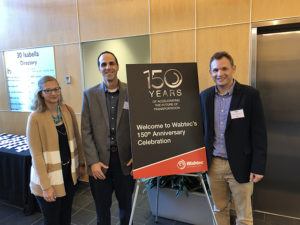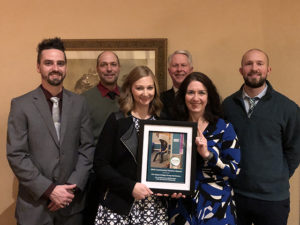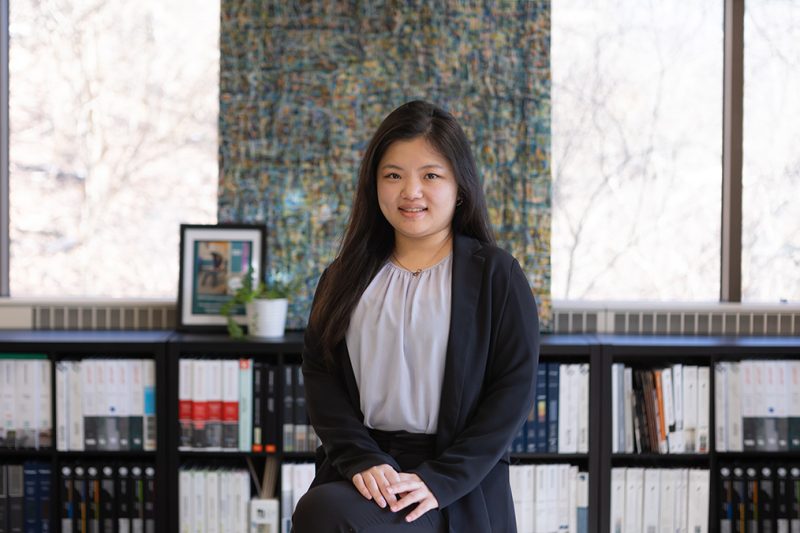
A Look Inside People’s Choice Award Winner, Presley’s Place
October 28, 2019
In this article featured in AIA Pittsburgh’s COLUMNS, HDG Project Architect, Jennifer Beck, AIA gives an inside look at what went into designing Presley’s Place to help make air travel accessible to all.
A Look Inside People’s Choice Award Winner, Presley’s Place: The First Sensory Space of Its Kind
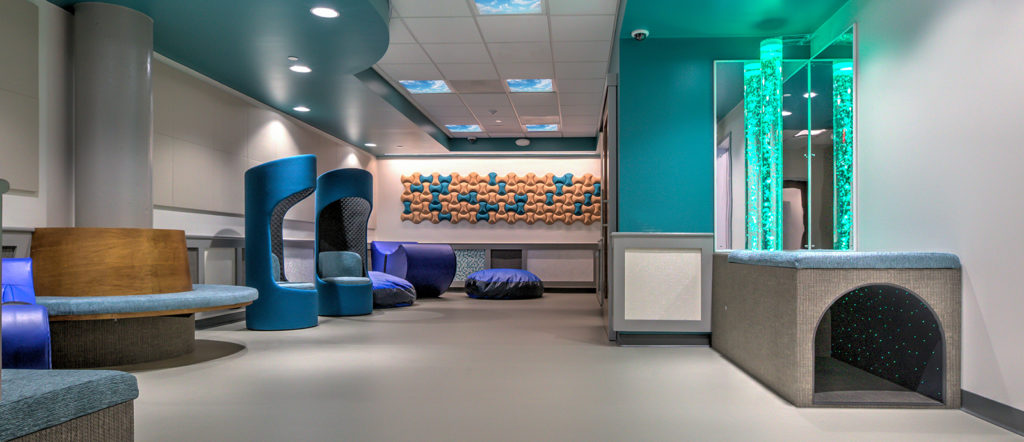
The Family Room in Presley’s Place at the Pittsburgh International Airport. All photos Matthew O’Haren Photography & Hayes Design Group Architects.
Presley’s Place just received the People’s Choice Award at AIA Pittsburgh’s Design Awards, demonstrating that there is a growing recognition of the strong impact design has on mental and physical health. Located at the Pittsburgh International Airport, Presley’s Place is named after the son of airport heavy equipment operator Jason Rudge, who originally pitched the idea of a sensory room to Allegheny County Airport Authority CEO, Christina Cassotis, through an employee suggestion box.
That simple suggestion led to the design and construction of a 1,500-square-foot space that serves as a respite for travelers with sensory processing issues, and their companions, who may have a need to de-stress while traveling. Pittsburgh International’s space isn’t just a room, it is an entire sensory-friendly suite, and appears to be “one of the world’s largest airport sensory spaces”.

Several kinds of seating are available in Presley’s Place. Cushioned custom benches are located near the tactile wainscot wall which provides five different surfaces for users to feel and move their hands across, providing both sensory comfort and tactile awareness. The space underneath the curved bench is available for passengers to place baggage. Cushioned rockers in two sizes were provided by TFH furniture.
The Allegheny County Airport Authority (ACAA) turned to us (Hayes Design Group Architects, or HDG) as one of their on-call architects to design the space based on our company’s experience in schools and other types of educational environments. We began with listening, working with the Airport Authority’s interdepartmental team at Pittsburgh International Airport and the Autism Connection of Pennsylvania to gather input from advocacy groups, individuals, and caregivers of those with neurodevelopmental challenges. We also visited facilities with sensory rooms, including schools and hospitals, to see what had been done in other similar spaces.
“Pittsburgh International and HDG began by asking us for help, then listening to families impacted by autism. We were thrilled to see the amazing outcome of a project. We believe in ‘belonging beyond acceptance,’ and this room means that people with autism belong in air travel,” says Luciana Randall, Executive Director of the Autism Connection of Pennsylvania.
Not having a strong personal connection to autism myself, I don’t think I understood prior to this project the diversity of needs that are met by this kind of space. I’m motivated and inspired by the potential of improving the everyday lives of people, not just in airports, but in many public areas that could benefit from spaces like this – grocery stores, sporting venues, museums and other cultural attractions, amusement parks, public pools and recreation facilities, and more.
Continue reading the rest of the article on AIA Pittsburgh’s website…
Additional Photos of the Project:

Jetway – From the Foyer, a visitor can choose to enter into the Family Room, or into the Airplane Experience. This hallway is meant to mimic the feeling of walking down the jetway towards an aircraft.

Walls and ceilings are designed with acoustic enhancements to ensure that the space is shielded from concourse and exterior noise. Acoustic sliding doors help to maintain the quiet of the various spaces. Acoustic wall panels help to absorb sound in this larger space; cork acoustic wall pads also provide tactile experience and visual interest.
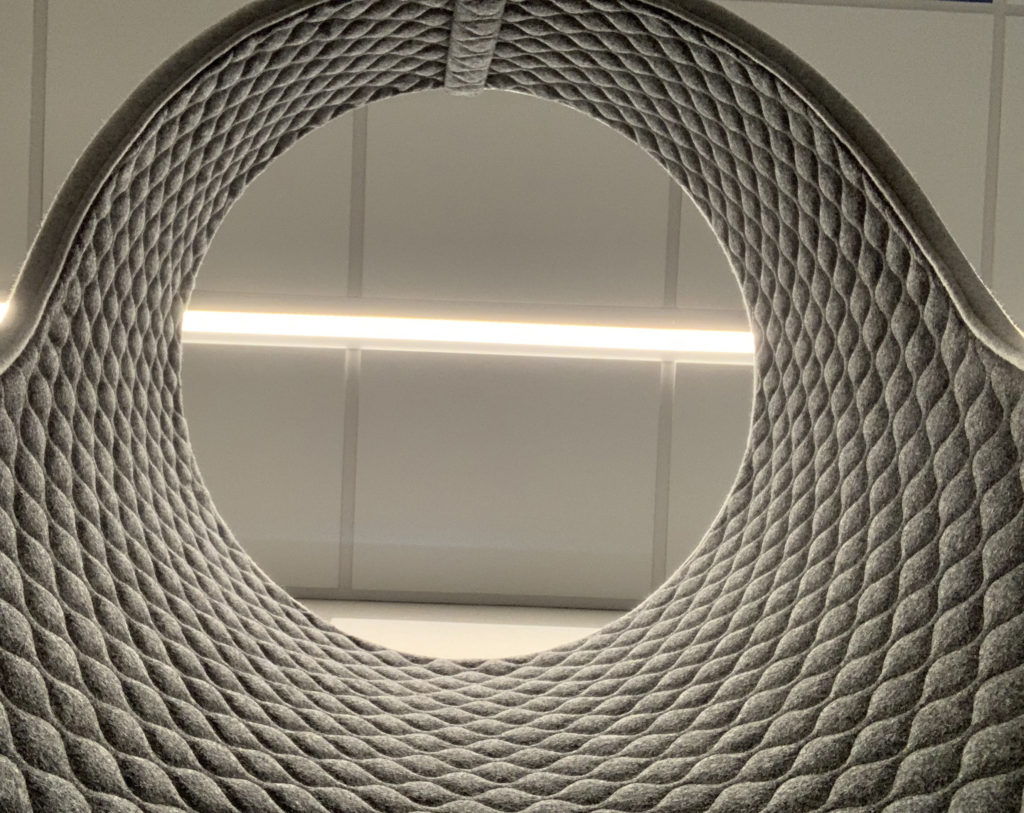
The Quiet Room is a room designed for silence, which most adults with autism prefer. There are chairs and a table for those who need to do some work, as well as swiveling KI Connection Booth Privacy Chairs for those who would like to feel cocooned (photo is taken looking up through one of these chairs).
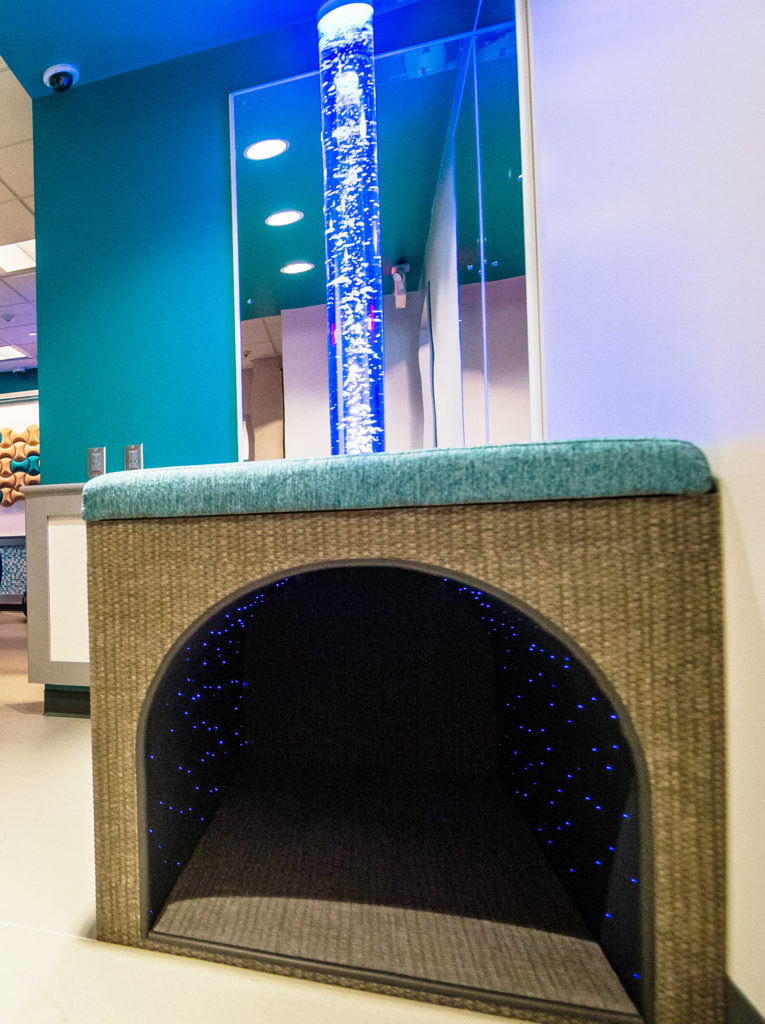
Custom Sensory Support Nooks – Bubble tubes and mirrors provided by TFH USA inspired HDG’s design of the custom sensory benches. The bubble tubes provide both a soothing sound and calming visual. A hidden panel provides access to the power supplies for the bubble tubes and the fiberoptic carpet within the bench’s tunnel. You can see the inside of the bubble tube bench, where a fiberoptic carpet tunnel has twinkling lights. It is a cozy, cocooning space where one can retreat from the hectic terminal.

Jennifer Beck, AIA is a project architect at Hayes Design Group Architects. She is also a recipient of the 2019 Sho-Ping Chin Women’s Leadership Summit Grant.


